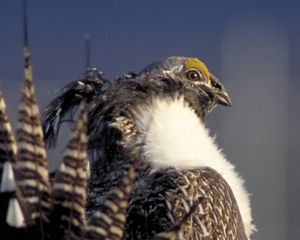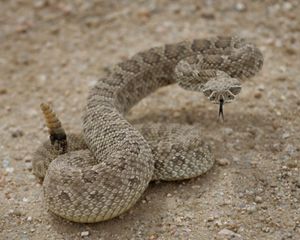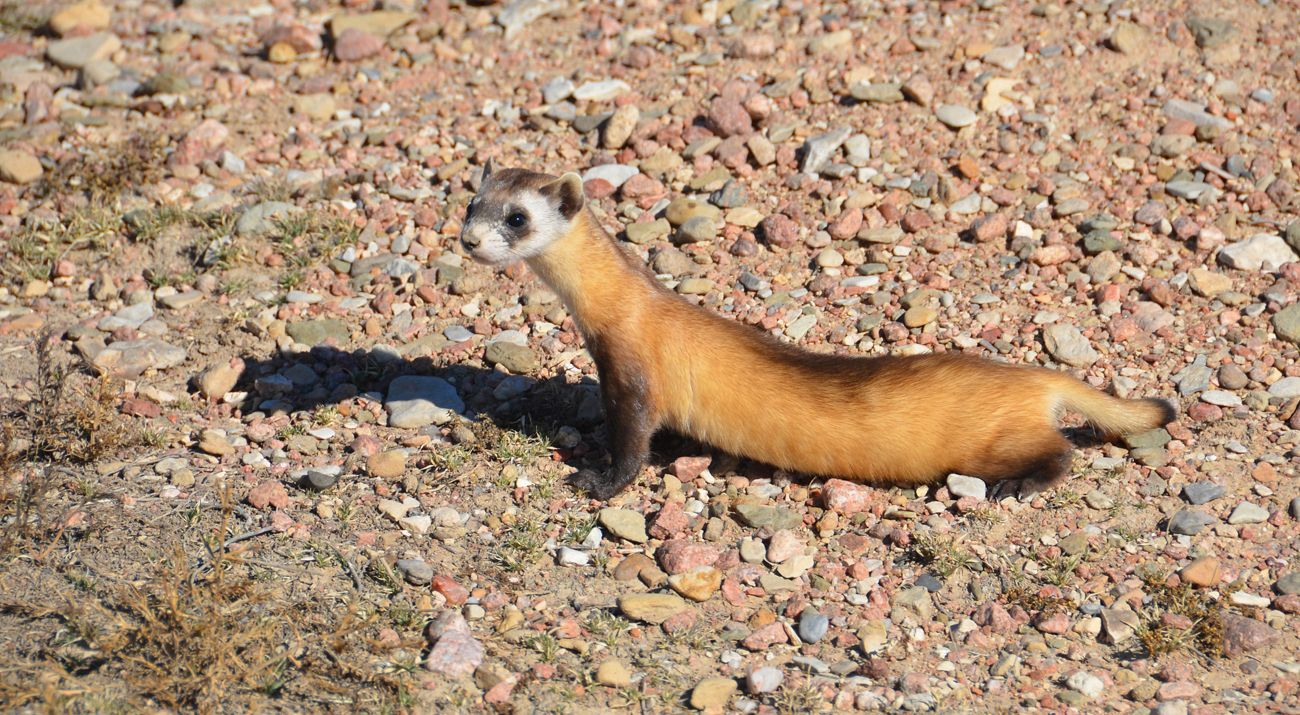
Black-footed Ferret
The only ferret native to the Americas was once thought to be extinct. Now we're working to preserve this playful and charming species.

Black Footed Ferret Facts
- Scientific name: Mustela nigripes
- Federal listing: Endangered
- Diet: Almost exclusively prairie dogs!
- Population: 300 estimated in the wild
- Ideal habitat: Open grassland and prairie
- Region and range: Small populations were reintroduced in Montana, South Dakota, Wyoming, Colorado, Utah, New Mexico, Arizona, Kansas
Meet the Black-footed Ferret
The black-footed ferret is the only ferret native to the Americas. For millennia, black-footed ferrets inhabited a vast swath of North America that spread from Saskatchewan in Canada down into the Mexican state of Chihuahua. They are specialized predators that live only in prairie dog colonies. In fact, black-footed ferrets have evolved to depend almost exclusively on prairie dogs and can’t survive without them.
Wild Things Return
This PBS video goes behind the scenes at black-footed ferret reintroduction efforts.
Watch The VideoShaped like tubes of muscle (they have the same circumference at the neck as at the hips), and armed with impressive teeth, large front paws and claws perfect for digging, black-footed ferrets are incredible hunters. They are quick and bold, darting through the extensive underground burrows of colonies where they kill and devour a prairie dog every few days. They are mainly nocturnal and rarely venture above ground during the daytime.


Black-footed ferrets are a member of the weasel family and about the same size as minks. Adults are 18 to 24 inches long and weigh less than three pounds. Their coats are yellow-beige with distinctive black markings on their face, feet, legs and tail that help them blend in with their habitat.
They are known to be quite playful and vocal! They bark, chatter and even chuckle, and the "ferret dance" is hopping about with their mouths wide open, apparently having all sorts of fun.
Why Black-Footed Ferrets Are Endangered
There may have been as many as 5 million black-footed ferrets in the United States in the early 1900s. But by the 1970s they were feared to be extinct. One reason for the loss of black-footed ferrets was widespread prairie dog declines. Prairie dogs were killed by:
- Being deliberately exterminated (they are often considered an agricultural pest)
- Habitat fragmentation and conversion to cropland or other types of development
- Sylvatic plague (which the ferrets are also susceptible to)
The black-footed ferret diet is 90% prairie dog. In fact, a single ferret can eat more than 100 prairie dogs in a year! The near-eradication of prairie dogs almost wiped out the ferrets.
Then, in 1981, a rancher’s dog in Wyoming brought home a ferret it had killed. This led to the discovery of a small number of black-footed ferrets nearby.
From only seven breeding black-footed ferrets, conservationists re-established their numbers in captivity. The first reintroduction happened in 1991 with 49 ferrets released back into the wild in Shirley Basin, Wyoming. The next year saw two wild-born litters.
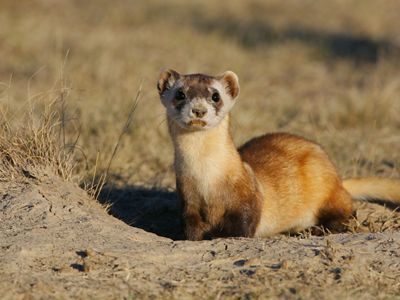
Conservation Timeline
- 1967: Listed as endangered
- 1979: Declared extinct
- 1981: Small population discovered in Meeteetse, WY
- 1987: Last 24 individuals captured from the wild
- 1987: Captive breeding program started
- 1991: First captive-bred ferrets reintroduced to Shirley Basin, WY
- 1998: There are more ferrets in the wild than in captivity
- 2015: Around 300 wild-born or released individuals living in the wild
From 1996 to 1999, 147 black-footed ferrets were released in South Dakota’s Conata Basin, an area where the species had existed historically. Slowly, the population began to grow.
Tragedy struck: sylvatic plague was discovered in the ferrets in Conata Basin in 2008. The Nature Conservancy, U.S. Fish & Wildlife Service, National Park Service, U.S. Forest Service and Prairie Wildlife Research crews were able to save some of the ferrets by vaccinating them and dusting the prairie dog holes with insecticide to slow the spread of the fleas that carry the plague. Yet many perished in the outbreak.
As of 2022, at least 197 ferrets live at Conata Basin—roughly 70% of the total wild-living population!
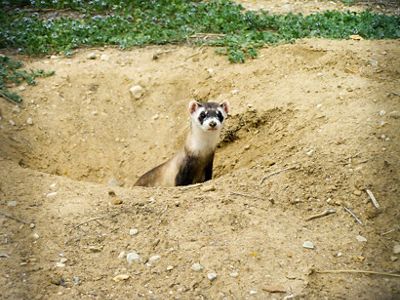
Why and How We're Helping to Save Black-Footed Ferrets
Black-footed ferrets are considered a flagship species. This means that saving them contributes to preserving lots of other important but less well-known (and often less charismatic) species. With more than 130 plants and animals, the North American prairie ecosystem depends on this diversity of life.
We're helping save black-footed ferrets by protecting their habitat and their food source. Their dependence on prairie dogs presents a challenge, as prairie dogs are considered an agricultural pest in many areas. We're working with farmers, ranchers, and landowners to provide space for prairie dogs and, therefore, black-footed ferrets.
Black-footed ferrets remain critically endangered, with an approximated 300 now living in the wild at dozens of sites across the US. That may sound like a small number, but with a stable captive population and evidence of breeding in the wild, this is a huge success for a species that nearly vanished.
Get more news about nature
Wildlife stories, conservation updates and how you can help, delivered monthly.
